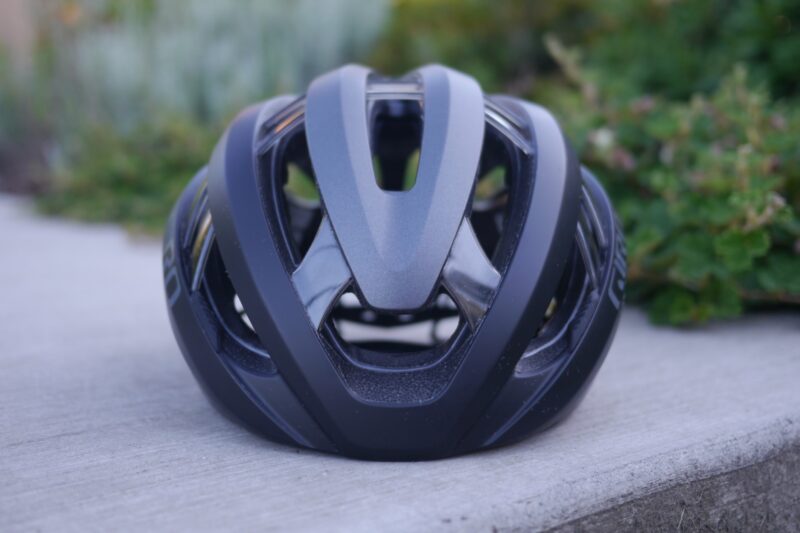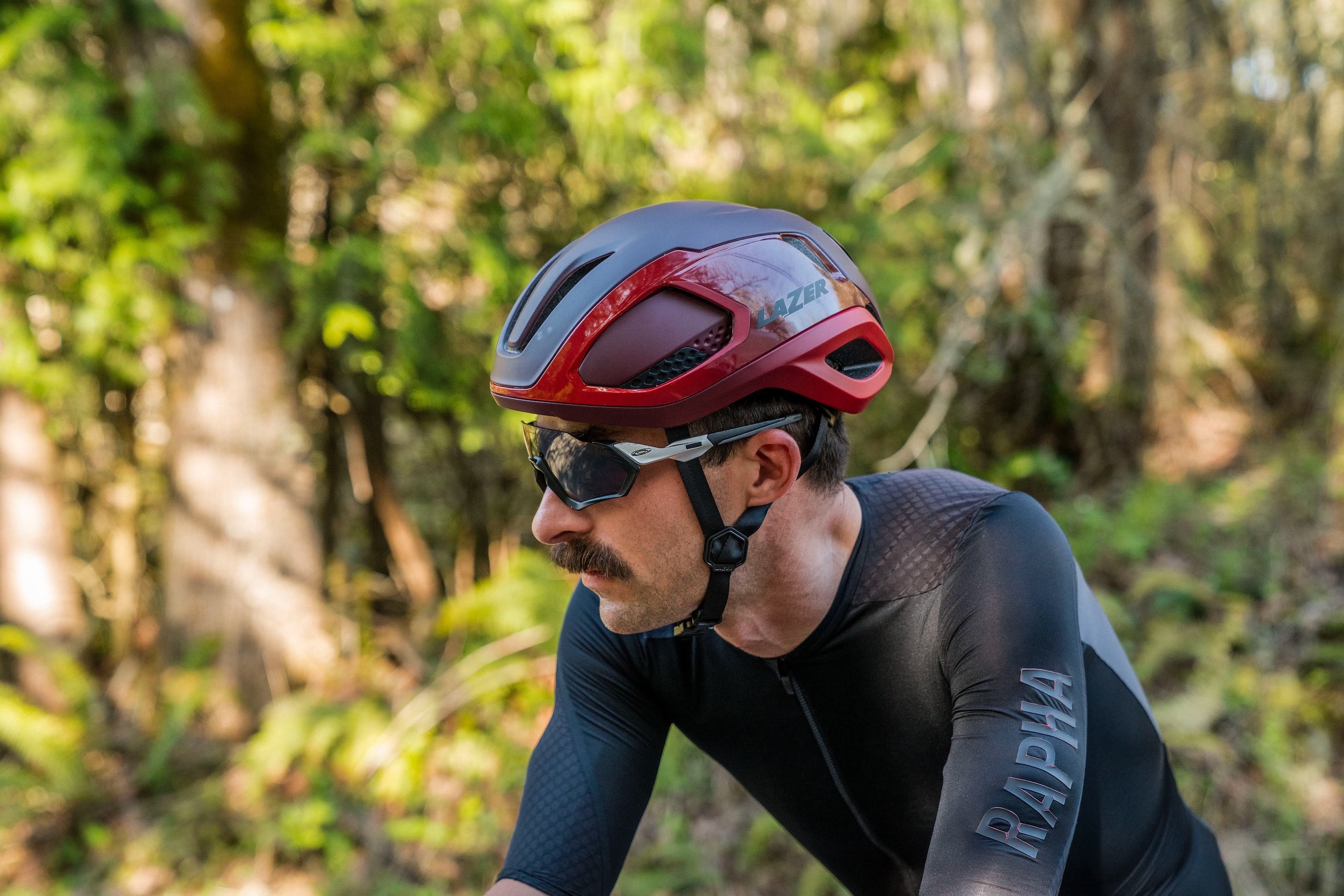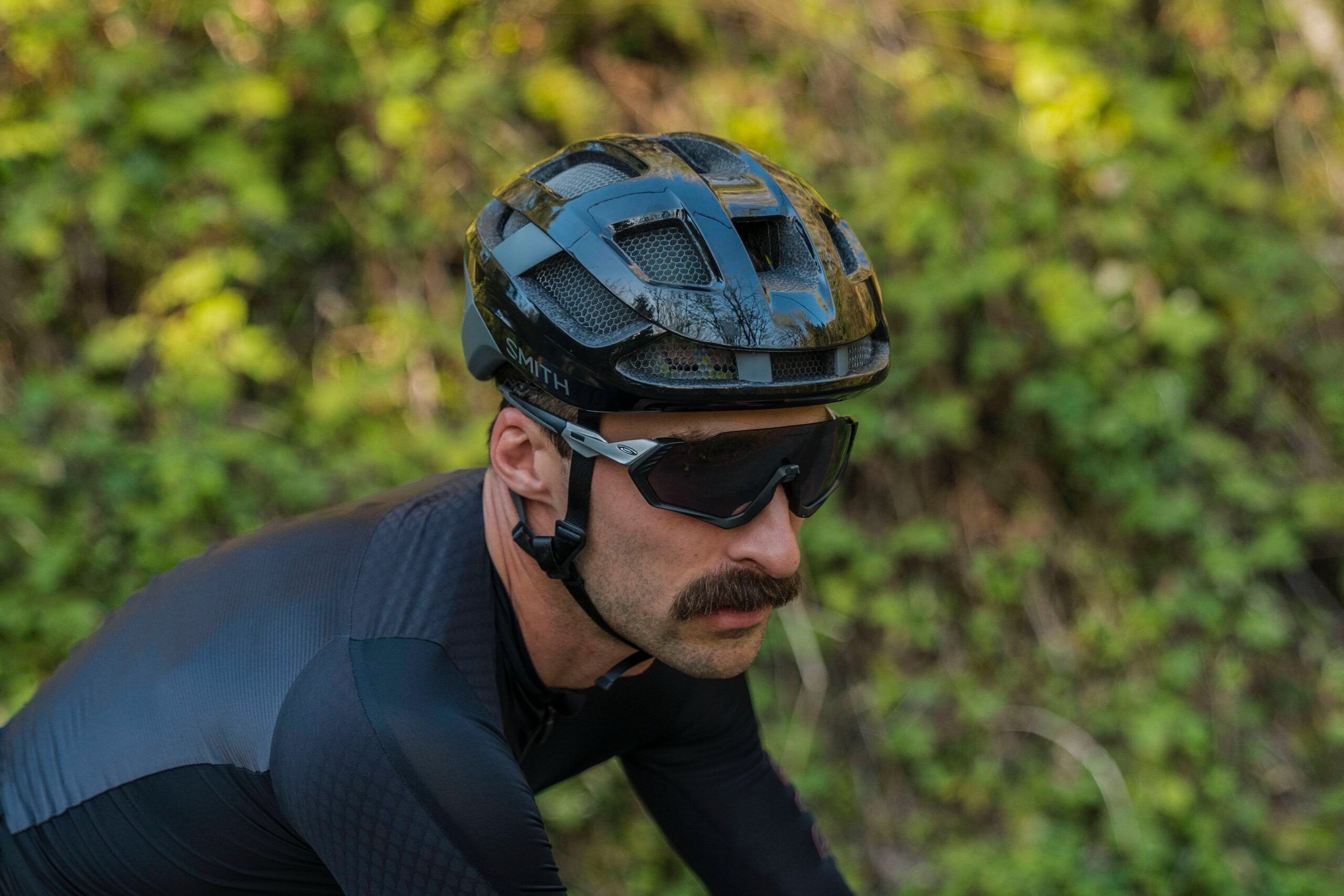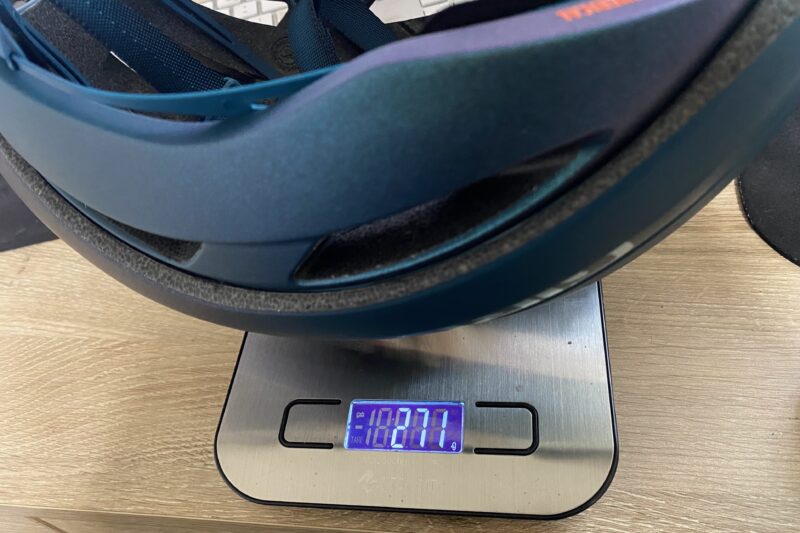While we all do our best to avoid them, accidents can and do happen, so a quality road bike helmet is the most important piece of gear you can wear while cycling. Thankfully, modern road cycling helmets are better than ever, helping to protect our heads in comfort and style.
With so many models on the market to choose from, finding the right road bike helmet can seem a little daunting. To help, we rounded up a diverse selection of thirteen of the best cycling helmets available to test and compare side by side. Each model was put through its paces over the course of several months and hundreds of miles of real-world riding.
During testing, we evaluated each model on important performance characteristics like fit, comfort, adjustments, ventilation, and weight. After much scrutiny and deliberation, we selected our favorite models overall and those that excel for specific reasons compared to the competition. While no one model will perfectly suit the needs of every rider, we trust that you’ll find something to suit your needs and budget in our recommendations.
Our top recommendations are listed below along with the best of the rest that are all worthy of consideration as well. To compare the models we tested at a glance be sure to look at our comparison chart. Check out our detailed buying advice if you need help deciding what to get, or reference our FAQ section for answers to common questions.
Editor’s Note: Our Best Road Bike Helmets Guide originally appeared on our sister site BikeRumor.com. It was first published on GearJunkie on May 23, 2024.
The Best Road Bike Helmets of 2024
Best Overall Road Bike Helmet
-
MSRP
$300 -
Weight
271g (Medium) -
Rotational Impact Protection System
MIPS Spherical -
Number of vents
24 -
Available sizes
S, M, L -
Virginia Tech Helmet Safety Rating
5-star -
Colors
Matte Ano Blue, Matte Ano Harbor Blue Fade, Matte White, Matte Black, Matte Carbon/Red, Matte Metallic Coal/Space Green
-
Supremely comfortable -
Great ventilation -
Light -
Excellent coverage -
Easy eyewear storage
Best Budget Road Bike Helmet
-
MSRP
$80 -
Weight
240g (Medium) -
Rotational Impact Protection System
Lazer KinetiCore -
Number of vents
18 -
Available sizes
S, M, L, -
Virginia Tech Helmet Safety Rating
5-star -
Colors
White/Orange, Matt Blue, Black/Fluo Yellow, White, Matt Black, Cosmic Berry, Red/Black
-
Lighter than many helmets costing double or triple -
Great fit -
High comfort level
-
Limited ventilation -
Looks a bit dull
Best Mid-Priced Road Bike Helmet
-
MSRP
$170 -
Weight
350g (Large) -
Rotational Impact Protection System
MIPS -
Number of vents
10 -
Available sizes
S, M, L -
Virginia Tech Helmet Safety Rating
4-star -
Colors
Lead Blue Matte, Sapphire Purple Matte, Lemon Calcite Matte, Epidote Green Metallic/Matte, Uranium Black Matte, Hydrogen White, Himalayan Salt Matte, Fluorescent Orange AVIP, Cerussite Kashima Metallic/Matte
-
Sleek profile -
Excellent coverage -
Reassuringly snug fit
Runner-Up Best Road Bike Helmet
-
MSRP
$300 -
Weight
240g (Medium) -
Rotational Impact Protection System
MIPS Air -
Number of vents
16 -
Available sizes
S, M, L -
Virginia Tech Helmet Safety Rating
5-star -
Colors
Viper Red/Cobra Blood, Dark Aquatic, Black, White, Red, White/Nautical Navy
-
Prodigious ventilation -
Uber-compact profile -
Liberal use of carbon fiber for crazy low weight -
Unconditional comfort guarantee -
Easy eyewear storage
-
Expensive -
Not a great application of BOA
Best Aero Road Bike Helmet
-
MSRP
$250 -
Weight
270g (Medium) -
Rotational Impact Protection System
MIPS Spherical -
Number of Vents
14 -
Available Sizes
S, M, L, -
Virginia Tech Helmet Safety Rating
5-star -
Colors
Matte Ano Blue, Matte Black/Gloss Black, Matte Black/Red/White, Matte Charcoal Mica, Matte Light Lilac Fade, Matte White/Silver
-
Aero performance in any temperature -
Excellent fit and comfort -
Less bulky and lighter than some aero helmets
-
Slightly bulkier than some some non-aero options
Best Value Aero Road Bike Helmet
-
Verified weight
340 g., size L -
Rotational impact protection
Yes, Mips Evolve Core -
Vents
10, with Micro-channels -
Sunglass ports
Yes
-
Lightweight -
Vents well -
Durable, high-quality construction -
Priced well below S-works models
-
May not fit round heads well
Best Ventilated Road Bike Helmet
-
MSRP
$300 -
Weight
230g (Medium) -
Rotational Impact Protection System
WG11 -
Number of vents
14 -
Available sizes
S, M, L -
Virginia Tech Helmet Safety Rating
Not yet rated -
Colors
Black, Red, Gray, White, Light Blue, Olive Matte, Blue Matte, Gray Matte
-
Excellent ventilation -
Very lightweight -
Low profile -
Unique styling
Best of the Rest
-
MSRP
$300 -
Weight
350g (Large) -
Rotational Impact Protection System
MIPS Node Air -
Number of vents
9 -
Available sizes
S, M, L -
Virginia Tech Helmet Safety Rating
5-star -
Colors
Metallic Deep Marine, Black, White, Red, Hyper Green/Dove Grey
-
Unbeatable ventilation in an aero lid -
Compatible with ANGi crash sensor -
Excellent finish quality
-
Magnetic clasp is fiddly -
Expensive -
Heavier weight
-
MSRP
$300 -
Weight
285g (Medium) -
Rotational Impact Protection System
Lazer KinetiCore -
Number of vents
10 -
Available sizes
S, M, L, XL -
Virginia Tech Helmet Safety Rating
5-star -
Colors
Black/Yellow, White/Black, Red, Matte Black
-
Compact profile -
Good ventilation for an aero helmet -
Low weight -
Clean aesthetics
-
ScrollSys adjustment system is difficult to operate -
Pressure points in front and rear -
Expensive
-
MSRP
$260 -
Weight
280g (Medium) -
Rotational Impact Protection System
MIPS -
Number of vents
18 -
Available sizes
S, M, L -
Virginia Tech Helmet Safety Rating
Not yet rated -
Colors
Matte Dew/Aurora/Bone, Matte Bone Gradient, Matte Stone/Moss, Poppy/Terra/Storm, Black/Matte Cement, Matte Blackout, Matte Cinder Haze, White/Matte White, Matte Neon Yellow Viz
-
Forgot-it’s-even-there comfort -
Light -
Excellent coverage -
Compact profile
-
Ventilation could be better
-
MSRP
$130 w/o MIPS, $170 with MIPS -
Weight
240 g (Large) -
Rotational Impact Protection System
MIPS (optional) -
Number of vents
10 -
Available sizes
S, M, L -
Virginia Tech Helmet Safety Rating
4-star (MIPS version) -
Colors
Shiny White, Shiny Black, Velvet Black, Flip Flop Purple.
-
Prodigious ventilation -
Uber-compact profile -
Lightweight -
Affordable
-
MSRP
$225 -
Weight
285g (Medium) -
Rotational Impact Protection System
MIPS Spherical -
Number of vents
13 -
Available Sizss
S, M, L -
Virginia Tech Helmet Safety Rating
5-star -
Colors
Black, Blue, Green, Camo, Pink, Titanium, White/Black
-
Good fit -
Good ventilation -
Excellent coverage
-
Looks a lot like a XC MTB helmet -
Magnetic strap clasp is fiddly -
Big branding
Road Bike Helmet Comparison Chart
How We Tested the Best Road Bike Helmets
In addition to reporting on the latest news, technology, and product releases, our cycling writers and editors take their cycling and safety very seriously. Our staff is in tune with the latest and greatest products on the market, and more often than not, we learn about and test new helmets before they even hit the market.
Review author Bennett Shane personally tested the vast majority of the helmets included in this review, and we’ve added one that was recently tested by one of our other team members. Bennett lives in Portland, OR, and has been road cycling seriously for the better part of the past two decades. After racing road and gravel for over 10 years, Bennett has traded the timing chip for long rides on lonely roads throughout the Pacific Northwest and more time with his young family. He has also worked for a number of prominent brands in the cycling industry, which has given him unique insight into the latest cycling gear and technology. Bennett’s cycling and industry experience combined have helped him develop a keen ability to tease out the subtle performance differences between the products he tests. In addition to the road bike helmet review, Bennet has also tested and reviewed the best road bike shoes and cycling bib shorts, along with numerous other product categories, including the best road bike tires.
For the purposes of this buyer’s guide, we rounded up 13 of the best road bike helmets available in 2024 to put through their paces in the real world. We chose a diverse selection of brands, styles, and price points with the goal of having a representative sample of the broad cycling helmet market. Testing these helmets side by side allows us to directly compare them and identify performance differences to form the basis for our recommendations. Each model’s design and construction were closely examined before taking them out for numerous rides of varying lengths in a range of weather conditions and temperatures. While riding, we scrutinized important performance characteristics like fit, comfort, ventilation, adjustments, and features, and even though it doesn’t affect performance, we even considered each model’s style.


Buying Advice: How to Choose the Best Road Bike Helmet
Road bike helmets meet a broad spectrum of needs, from keeping us comfortable to looking and performing our best and, of course, protecting us during the worst of the worst. We have analyzed and tested a diverse lineup to help you understand the options and pick the best helmet for your next ride.
Types of Road Bike Helmets
While you can road bike in just about any helmet you choose, helmets designed specifically for road cycling are the best fit for the task. Road bike helmets aim to balance sleek and streamlined designs with lightweight constructions and good ventilation while remaining protective in the event of a crash and head impact. They generally fall into two categories: lightweight and vented or aero. They differ from their mountain bike counterparts mostly by their lighter weight, reduced head coverage, and lack of a visor. If you’re looking for the best mountain bike helmet, don’t worry, we’ve tested those too.


Lightweight-Vented Road Bike Helmets
This is the more common style of helmet that the majority of road cyclists choose for most types of riding. Airflow will be better in a lightweight-vented helmet than in an aero helmet since air is directed through vents and onto your scalp rather than along the helmet’s surface. Riders who sweat more than average, spend a lot of time climbing, or often ride in extreme heat will benefit more from the superior cooling power of a lightweight-vented helmet. Can’t decide between an aero or a lightweight-vented helmet? The good news is that most brands have begun to incorporate aero shaping into the back and sides of lightweight-vented helmets without compromising ventilation at the front and top of the helmet, where it is most needed. The Giro Aries Spherical, Kask Protone Icon, and Trek Velocis MIPS are all super lightweight and well-ventilated options.


Aero Road Bike Helmets
Most helmet manufacturers offer an aerodynamically shaped helmet that is designed to smooth airflow over your head, resulting in faster speeds on the bike at the same level of rider effort. Keep in mind that these aerodynamic gains do typically incur marginal losses in ventilation, and add some weight to the helmet. Aero helmets may also perform better in a temperate or cold climate, as they shield your head more from cold air and light rainfall. While most aerodynamic equipment is a massive commitment of resources, an aero helmet can reduce your aero drag without draining your coffers. Research also indicates that, dollar for dollar, an aero helmet is a more effective way to reduce aero drag than frames and wheels. Models like the Giro Eclipse Spherical, Lazer vento KinetiCore, Specialized S-Works Evade 3, and the Specialized Propero 4 are good examples of aero road bike helmets.


Helmet Fit
Helmet fit will be personal to everyone. Some helmets will feel more oval in shape, and others more circular; some will feel more luxurious, and others more minimal. With some adjustment and fine-tuning, you should be able to achieve a comfortable and safe fit with any helmet in this guide, provided it’s the correct size.
A great first step is to measure the circumference of your head just above your ears in centimeters. Taking this step will quantify which size helmet you will be able to wear in each model. When you looking at helmets, look for the centimeter range corresponding to each size in the manufacturer’s size guide or printed on the box. There is no standard centimeter range for “small”, “medium”, and “large” sizes, so knowing the actual centimeter sizing of your head can save some time here. Whenever possible, it is always a good idea to try a helmet on before buying to ensure it fits properly.
Once the correct size is chosen and the retention system, tightening mechanism, and strap systems are adjusted to your needs, you will ideally have a snug but accommodating fit without any pressure points. The helmet should also cover your temples easily and come close to the tops of your ears. When swaying your head side-to-side, the helmet should stay firmly in place.


Chin Straps
A helmet’s strap system connects the helmet’s straps beneath your chin and keeps the helmet in place during a crash. When adjusted properly, the outer junctions of the straps by the ears should sit comfortably below your ear lobes, and both sections of the strap should be as close as possible to your head to minimize flapping in the wind. Under your chin, the strap should fit so that you can slide two fingers between the bottom of your chin and the strap, ensuring you can breathe comfortably. The chin strap is always adjustable, so it can be dialed in to fit the user’s head shape. The straps around the ears are typically also adjustable, though the systems vary slightly between brands and models to allow the user to position them to avoid unwanted ear contact.


Adjustable Harness or Retention System
The adjustment harness/retention system counters the chin straps and provides a secure hold at the back of your head, with many modern helmets wrapping tension around the entire head. Most helmets enable adjustment of the entire retention system at the rear interior of the helmet. By adjusting where the retention system is anchored inside the helmet, you can dramatically change the interior volume and fore/aft tilt of the helmet to perfect the fit for your specific head shape. Ideally, by adjusting the retention system correctly, you will place the adjustable harness and its tightening mechanism so that it cradles the base of your occipital lobe.
Tightening Mechanism
You’ll use the tightening mechanism on the adjustment harness every time you put on or remove the helmet to fine-tune the fit. Some companies use BOA dials like you’ll find on many shoes or some other sort of simple twist dial. Other companies use more complicated mechanisms with varying success. This part of the helmet just needs to work, and its operation should be intuitive, fast, and quiet while performing the important function of keeping the helmet snug, secure, and comfortable on your head.


Rotational Impact Protection
Rotational impact protection systems have become relatively standard in cycling helmets over the past decade or so. MIPS – Multi-directional Impact Protection System – is the industry leader and the most common form of rotational impact protection. Most brands have licensed some iteration of this technology or developed a proprietary system to achieve similar results. The goal with MIPS and similar systems is to create a low-friction layer, or slip-plane, within the helmet that allows the outer layer of the helmet to move 10-15mm during angled impacts, thus limiting the rotational force applied to your head/brain, and reducing the chance of a concussion. MIPS itself now takes various forms and iterations, including a more standard MIPS liner, MIPS Spherical (dual shells that function like a ball and socket), MIPS Integra, and MIPS Air, which incorporates the technology into the pads themselves.
Other brands have created their own technologies that aim to provide the same type of rotational impact protection with different designs. Lazer has developed KinetiCore, which involves small isolated blocks of EPS foam within the helmet that are designed to crush and crumple on impact and is used in the Tonic KinetiCore and the Vento KinetiCore. Bontrager uses a cellular structure called WaveCel in some of their helmets that is intended to work in much the same way. Similarly, Smith incorporates Koroyd into many of its helmets, including the Trace MIPS, which is a cellular structure like WaveCel that is meant to crush and crumple on impact while allowing air to pass through.
Safety Rating
All helmets must pass tests to be certified for sale in their respective countries. Since 1999 in the US, the Consumer Products Safety Commission (CPSC) is the certifying agency that must approve a helmet before it can be legally sold. In Europe, the cycling standard is CE-EN1078. Most modern helmets that are sold in multiple markets pass both certifications. In some cases, cheap products purchased online may not meet these certification standards, which is why we recommend that cyclists always buy reputable name-brand helmets.
Since we do not perform impact testing on the helmets we test and review, we have come to rely on the independent test lab at Virginia Tech for quantifiable data regarding the protective qualities of bicycle helmets. As of the publication date of this article, they have tested 193 different road, mountain, and commuter cycling helmets. Using specialized equipment, they evaluate each helmet using 24 impact tests. They measure a helmet’s ability to decrease both linear acceleration and rotational velocity to determine how well each model may reduce the risk of concussion. Their numerical results translate to a star rating, 1-5, with 5 being the highest and most protective. The lab has not tested every model on the market or included in our review, but many of the models listed above have been rated. In fact, our best overall road bike helmet, the Giro Aries Spherical, is the top-rated model for protection that they have tested to date.


Weight
As with most things in the sport of road cycling, weight is a consideration for helmets as well. While it is not the end all be all, lighter is generally considered better if all other things are equal, and helmets must pass the same certification tests irrespective of weight. The weight of the helmets we tested varies between 230 grams and 350 grams, so the differences between them may seem pretty significant. In reality, a 350-gram helmet is still relatively lightweight, though it will feel slightly heavier on the head than a featherlight 230-gram model. That said, riders focused on endurance riding or road racing will generally be most concerned with weight, as even an extra 50 grams can increase neck strain with each passing hour on the bike.
Function Over Form?
Even though a bike helmet is a great example of form following function, it’s important to like the way your helmet looks. Consider the arrangement and finish of the helmet’s vents. Vents should be arranged in a way that’s pleasing to your eye, augmenting the helmet’s overall shape. Vents should also be finished cleanly, without rough edges of foam visible. Also, consider the helmet’s overall shape and profile. Does the helmet look overly bulbous once you have put it on, or does it have a compact, streamlined form? Remember that the back of the helmet is the portion most visible to people when you are riding together. It’s worth noting that brightly colored helmets, including silver and white, also increase your visibility to motorists while you ride.


Accessory Integration
Integration with accessories is becoming more common in helmets. Some helmets have dedicated spaces for storing sunglasses, and others enable lights to be clipped to the helmet at the back and sides for night riding. Specialized has developed the ANGI (Angular and G-Force indicator) system, which is a crash detection sensor that can be purchased separately and added to your helmet. ANGi requires a subscription, but this little device can notify your emergency contacts in the event of a crash. ABUS has also developed a sensor called QUIN that aims to function in a similar way.
Value
The helmets we tested vary in price from $80 up to $300. While spending top dollar may get you more premium finishes, better ventilation, and fancier features, even the least expensive helmets we tested will serve you well if you’re operating on a tighter budget. If you’re a recreational or more casual rider, or you simply aren’t concerned with having the flashiest and most expensive gear, then a helmet like the Giro Agilis MIPS or the Lazer Tonic KinetiCore will get the job done at a fraction of the cost of the more expensive options. Regardless of price, the most important thing is to get a helmet that fits properly and to wear it whenever you throw your leg over the bike.
Frequently Asked Questions About Road Bike Helmets
Any type of cycling can be very expensive, and the costs aren’t limited to the latest bikes and components. Even a fancy helmet can set you back several hundred dollars. It’s hard to put a price tag on head protection, however, but thankfully, many brands make budget-friendly models that perform nearly as well as their more expensive counterparts. They may be slightly heavier, not as well-ventilated, and perhaps not as stylish, but even a less expensive helmet will protect your head much better than none at all. And, even less expensive models must pass the same certification tests as the high-end models, and many of them perform better in Virginia Tech testing. So, just because a helmet doesn’t cost as much doesn’t mean that you have to sacrifice head protection in most cases.
A properly fitting helmet is critical to your comfort and the helmet’s protective efficacy in the event of a crash. The first thing you need to do is get the correct shell size. Trying a helmet on is a surefire way to find the right size, so we recommend doing that whenever possible. Alternatively, measuring your head will show you what size you need. Using a soft measuring tape, measure the circumference of your head just above the ears to find your size in centimeters. If you don’t have a soft measuring tape, a piece of string and a ruler can be used instead. This measurement should fall within the recommended size range of one of a helmet’s multiple shell sizes. Helmet manufacturers have size charts on their websites where you can find the sizing information for each specific model.
Rotational impact protection systems like MIPS have been around for the past decade or so and have become pretty ubiquitous among all types of cycling helmets. Most, but not all, helmets these days come with some form of MIPS or another design that is intended to work similarly. While there is some speculation about the effectiveness of these systems, research suggests that they do help reduce the rotational forces that reach the brain in certain types of impacts. Now, even a helmet without a rotational impact protection system will protect your head from direct impact and help to dissipate impact forces. That said, we are happy to have additional safety features built into helmets, no matter how small the added protection may be. So, the answer is no, you don’t need MIPS or something similar in your helmet, but we’ll take all the protection we can get.
Aerodynamic helmets are designed to allow air to move more freely around and over the helmet with the goal of reducing drag. They do this by having smoother surfaces and more sculpted designs than their all-around counterparts. An aero helmet will almost always have less drag than a helmet that isn’t specifically designed to be super aerodynamic, and most have undergone extensive wind tunnel testing to ensure they work as intended. In general, an aero helmet will provide a marginal gain in efficiency, which, when added up over time can result in a more substantial savings of time and energy. That said, aero helmets tend to have a slight reduction in ventilation and a slight increase in weight, comparatively, so that is something to be considered. Still, if saving a few watts and seconds is important to you, an aero helmet can help you do that, and it costs a lot less than an aero bike or aero wheels.
Yes. Helmets are designed to protect your head by absorbing impact forces through crushing and cracking of the EPS foam and outer shell. Any time your helmeted head impacts the ground, the structural integrity and protective qualities of the helmet can be compromised and it should be replaced. Even if there is no visible damage to the foam or any other part of the helmet, there may be damage that cannot be seen. It is always recommended that you replace your helmet after it has taken an impact. Some brands even offer crash replacements at a discounted rate.














